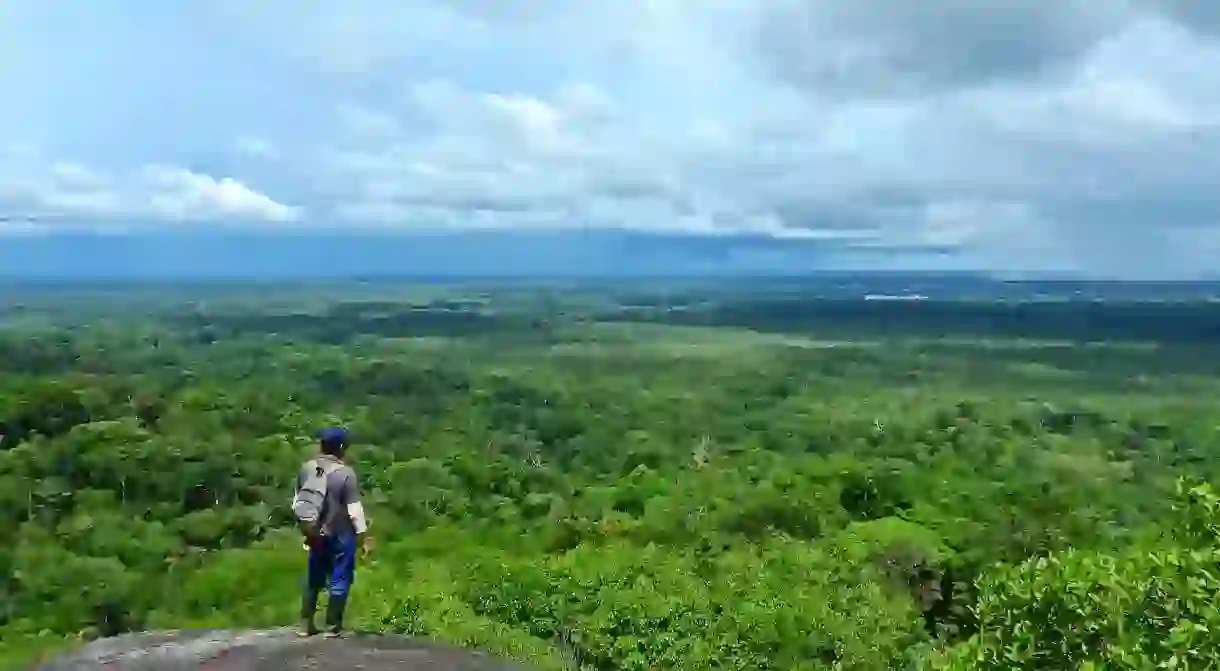8 Destinations Reopening to Tourism After the Colombian Peace Agreement

Newfound peace in Colombia is spreading across the land and revitalizing its most gorgeous and remote corners.
Since the signing of 2016’s historic peace agreement between the Colombian government and the FARC guerrillas, many parts of the country that were formerly no-go zones have begun to open up to tourism again (or, in some cases, for the first time). Some regions were considered unsafe right up until the final years of the conflict, while some suffered from misconceptions related to their violent pasts. From isolated jungle towns in the heart of the Amazon rainforest to the wild beaches of the Pacific coast, here are eight Colombian destinations reopening to tourism since the Colombian peace agreement.
San José del Guaviare
San José del Guaviare is the capital of the Colombian department of Guaviare and is located on the frontier of the country’s Eastern Plains region and the Amazon rainforest. The urban area and its surroundings were practically off-limits as little as five years ago, and it has only been in the past couple of years that the area has really been able to make the most of its incredible tourism potential. The major attractions of San José include ancient rock paintings (some as old as 10,000 years), red rivers of rare algae, and surreal natural rock formations.

Florencia
Florencia is known as “the Gateway to the Amazon” and is the capital city of Caquetá department. This southern jungle region was heavily affected by the Colombian armed conflict, but Florencia and the surrounding area have really opened up to tourism over the past couple of years. Local operators are working hard to rid the region of the stigma it once suffered from. Activities around Florencia include white-water rafting, canyoning, jungle trekking, birding, and sampling some of the region’s excellent gastronomy.
La Planada and Rio Ñambí natural reserves
These two stunning natural reserves are located in the lush Pacific–Andean jungles on the road from Pasto to the Pacific Ocean port city of Tumaco. They were once considered the jewels of Colombia’s ecotourism crown before the conflict arrived in Nariño department rendered them off-limits for many years. However, the peace agreement has opened up both reserves to tourism once more, and La Planada and Rio Ñambí are both accessible and ready to show off the true wonders of Colombia’s biodiversity, from colorful toucans to deadly poison-arrow frogs.

Mitú
The capital city of Vaupes department holds the once-ominous distinction of being the one departmental capital ever taken by the FARC, who briefly captured the small jungle settlement in 1998. Mitú is also Colombia’s most isolated capital city and the only one that cannot be reached by road, making it an absolute paradise for travelers looking for an authentic off-the-beaten-track experience in the heart of the Colombian Amazon. Mitú is primarily known as an ornithological paradise, and tourists will marvel at its giant jungle hills, tantalizing mixture of diverse species, red rivers, and fascinating indigenous cultures.
The Mavecure Hills
Guainia department is another Colombian Amazonian region that was long considered too dangerous for visitors, and another that has made a strong tourism comeback since the 2016 deal. Although tourists were already starting to visit in small numbers prior to the peace agreement, the deal really boosted the region’s tourism (as with several other destinations on this list) as people’s perceptions about the region changed. The principal reason to visit Guainia is to spend a few days exploring the majestic Mavecure Hills, three giant rocky outcrops towering over the surrounding jungle.

Tierradentro
Tierradentro in Cauca department is considered one of Colombia’s most important archeological sites and has also been declared a World Heritage Site by UNESCO. The Andean region of Cauca has been particularly impacted by the Colombian conflict, but Tierradento is finally open to visitors once more, following years of being considered a red zone. The chance to climb underground into the elaborately decorated ancient tombs dotting the verdant hillsides is not one to miss out on.
The Llanos Orientales
Colombia’s vast Eastern Plains region suffered a great deal from violence and conflict during the worst years of the civil war, but since the peace agreement was signed, many of the attractions located in the departments of Meta, Casanare, and Arauca have opened up to tourism once more. Unique destinations such as Caño Cristales are now considered safe for tourists to visit, and there’s nothing else in Colombia like taking a safari through the great plains on the hunt for giant anteaters, pumas, and anacondas.

The Pacific
Most of Colombia’s Pacific coast consists of wild, inaccessible jungle and had been a haven for guerrillas for many years as a result of this. Although parts of the region are still considered unsafe, much of the Pacific coast has been gradually becoming more accessible to tourism over the past few years. Mainland destinations like Nuqui and Bahia Solano are now top ecotourism hotspots, while the paradise island of Gorgona (after having been closed down in 2014 following a FARC attack) reopened last year. From June to October, visitors to the Pacific can enjoy the jaw-dropping sight of pods of giant humpback whales.













